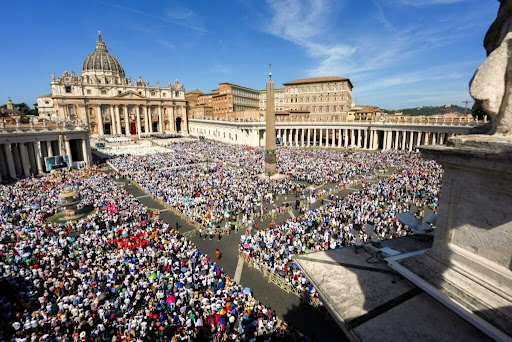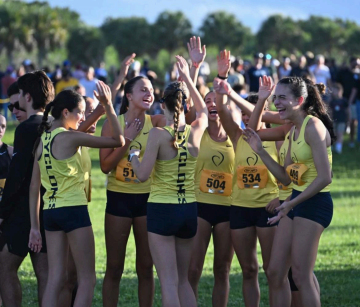
Emerson Fittipaldi has risen through the ranks of motorsport, becoming a Formula One World Champion at 25 in 1972, the youngest World Champion of his time. He also won the World Championship in 1974. After finding success at McLaren and Lotus in Formula One, Fittipaldi moved to Indycar, winning the Indy 500 twice and the Indycar Championship once. Throughout his journey, he learned the importance of faith, love, and passion for your sport.
The following interview has been edited and condensed for clarity.
What inspired you to become an F1 driver, and how did you achieve that goal?
My father was a motor racing journalist, and I remember when I was 5 years old, he took me to the Interlagos Race track in São Paulo, Brazil. That was the first time I saw a race car, and I remember I loved it. I told my father, “One day, I want to be a race driver.”
In Brazil, we didn’t have Formula One–we had local races–so I started with karting. I liked to build my own cars. I built a kart with my brother when I was 17 and started go-karting in Brazil. Then we built a small Formula with an engine, the Formula Vee. And, later, a sports race car with a Porsche engine, the Fittipaldi Porsche, when I was about 20 years old.
In addition to karting. I raced for two years on motorcycles, and I did hydroplane boats as well. At that time, I could only dream of being a Formula One Driver. The best entry at that time for young drivers to try to move all the way up the steps and graduate to Formula One was England., so I sold my Formula Vee, went to England, and started racing. There, I bought a Formula Ford. During the week, I worked as a mechanic for the guy who prepared my engine. My budget was very limited.
But I met the right people and was at the right place, and God blessed me. I had a big blessing from God because I moved from Formula Ford in England to Formula One in only a year.
If you weren’t a Formula One driver, what other career would you pursue?
A fighter pilot for the Air Force–not a regular pilot for your conventional plane. I would like to be a fighter pilot because I like the speed. I think a fighter pilot is very similar to a Formula One driver.
What advice would you give to someone looking to work in the motorsport field?
My father gave very good advice. When he saw I wanted to be a race car driver, he said, “To race is a very complex and difficult sport. If you want to get involved, you have to dedicate yourself with full heart, full determination, full passion and love for the sport.” And I think this is similar to what I have learned from Jesus. It doesn’t matter what work you do. Whatever you do, do it with love, passion, dedication, and effort. The more effort you put in, the better the result will be.
How do you inspire your children to pursue their dreams?
I tell them that even with talent, they have to train very hard. Everything in life today is very tough. There is this thing in English that they say: “Hard work beats talent when talent doesn’t work hard.”
Are there any important moments, influences, or role models from your early career that shaped your path to racing and you as a person?
When I started, there were two idols I had in motor racing. One was an Argentinian named Juan Manuel Fangio, and one was a Brazilian, Chico Landi. Both were my mentors. I was motivated to be like them because they were friends of my father, and they had known me since I was a very small child. When I started to be successful, they followed my career. And when I won Indianapolis, Mr. Fangio from Argentina sent me a nice letter congratulating me. It was a fantastic achievement to receive a letter from one of my idols.
Throughout your career and life, you’ve experienced many difficulties. How have you persevered through those challenges? In what ways have you turned your failures into successes?
In life, we all have tough and difficult times, and you need to remember that tomorrow is another opportunity. The past is history; you have to move forward. We have to enjoy life, in the present. As they say, “The past is history, future is mystery. Today is a gift; that is why we call it the present.”
Was there a race that you think was the turning point in your career?
I would say the most important race was when I won my first world championship. It was the Italian Grand Prix on a very famous circuit in Italy called Monza. It was a turning point because after that I had a different life. But when you’re a Christian, and you accept God, you have to follow his way. That’s what makes a good human being anytime in history–when you are able to follow in Jesus’ steps. It was very difficult after winning because when you achieve a very high level of success, being a celebrity and being known in sports, if you don’t have the correct direction, you can get lost.
What do you enjoy doing in your free time?
When I have free time, I want to be with my family as much as I can because I have traveled a lot over the past 5 years. I always like to go home to Italy or to Key Biscayne. I like to be with my family and friends. I also like watching sports, and going to the gym is a pleasure for me. Finally, I dedicate myself to learning about Jesus’ life as much as I can very early in the morning, from 4:30 to 6:00 a.m.
How have Formula One and IndyCar changed during your time in the sport, both in terms of technology and regulations? Do you see it becoming more sustainable in the future?
When I started, Formula One was extremely dangerous. The racetracks didn’t have runoff areas, and when the car lost control you could hit a tree, a post, or spectators. We had some real tragedies happen in the sport. I started Formula One during a new era of safety. Back then, it was very hard work to improve safety globally, but we have much stronger cars now with carbon fiber. The chassis and where the drivers are sitting is all carbon fiber. Carbon fiber has even been used by NASA on the space shuttles. It is a very strong, resistant material.
Also, we now have much better racing and driving equipment. The new helmets are safer, the race uniform is much more fireproof, and the gloves, the boots, and safety belts of the car have improved a lot. In addition, we have escape areas. If you make a mistake on the racetrack, you now have a runoff area. If you need to control the car, you have time to decelerate the car before you hit something solid. That was a big improvement in safety, both in Indycar and Formula One.
And then, technology has changed significantly. Exactly 50 years ago, when I was driving for McLaren, and I won my second world championship, we had small computers for the first time–HP, Hewlett-Packard–to measure the air pressure in the car. We were able to use the aerodynamic results to make the car stick more and have more stability. We called it Downforce. Now you can measure every inch of the track and see what the car is doing at that spot. You can measure how much steering wheel the driver is using, how much pressure is on the brakes, and how much sideways G force the car has. There is so much measurement of all the dynamics of the car to try to improve.
And finally, you have all the analytics. We have many engineers on every team, who analyze and make decisions for the next practice or for the next race. The electronics onboard a racing car are so sophisticated. Today, motor racing is like science because we can measure every part of the car and get the analytics immediately, and then the engineers can analyze, and the driver can comment about how the car is doing. Formula One is now a sport and a science.”
What do you feel are the main differences between IndyCar and Formula One and other racing series?
Formula One races on two types of streets: street circuits, like the Miami Grand Prix, are on a permanent track. Indycar also races on street circuits–but they use racetracks that are never used for any other purpose. Indycar also races on Ovals, and you have the super speedy ones like Indianapolis. That is the big difference between Formula One and Indycar: the different tracks. Oval tracks are much faster than Formula One tracks. They are two different categories, two different rules, but they are great. Indycar is very big in America, but Formula One is getting bigger.
In the next few years, what do you hope to achieve?
I have always had the dream to build my own car, so I’m working on that. And my son Emmo’s dream is to be in Formula One. He is in a category similar to Formula 3. That means he has to go to Formula 2, and then hopefully one day be in Formula One. He is 17 years old now, and he is fully dedicated. He loves the sport, and has the passion. And that’s what I am doing for the next few years–supporting him.
Do you have any final remarks?
I think in today’s world, young people have to dedicate themselves to sports–any type of sport–as long as they put in physical and mental effort. And then for sure, to have faith in God. Because that is the plot of life. You know, God loves us. People have to open their hearts to God.







































Diana Sudasassi • Jan 13, 2025 at 9:09 am
Very well-written ladies! I learned a lot from this article, and I admire Mr. Fittipaldi even more for his faith. Did you interview him in person?
Nina Heffron • Dec 19, 2024 at 8:43 pm
Awesome!
Henry Perez • Dec 19, 2024 at 7:30 am
Extraordinary article. Congratulations on such a wonderful work!